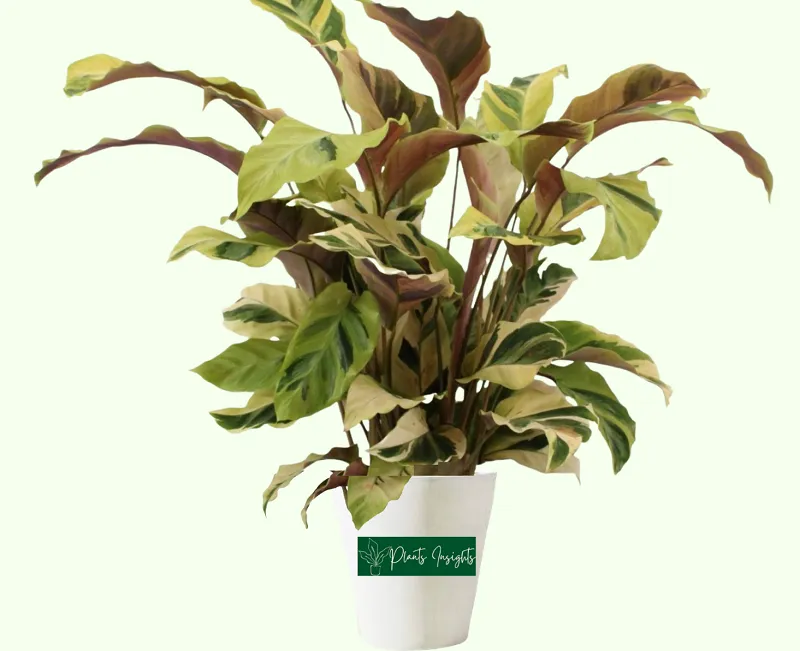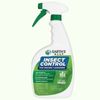A beauty from Brazilian rainforests, Calathea Yellow Fusion, has its grace and attraction due to its stunning foliage patterns. Calathea Yellow Fusion, also famous as Calathea Thai Beauty, is known for its foliage with distinguished patterns and master painting strokes of yellow and lime green colors displaying a marble look. It can be a great addition to your indoor spaces or outdoors.
Prominent Family Members: Calathea White Star, Calathea Leopardina, Calathea Fasciata, Calathea Roseopicta, Calathea Flamestar, Calathea Loeseneri, Calathea Freddie
Essential Products
How do you take care of Yellow Calathea Fusion?
Calathea Yellow Fusion care requires bright diffused light with lots of humidity and a warm environment in its surrounding. Moreover, it loves nutrient-rich moist soil throughout the year but hates soggy soil. Correct soil selection with a measured watering routine will keep Yellow Fusion from soil-borne fungus diseases and flourish extraordinarily. Let us dig deep further into the plant’s peculiar requirement.

Adding Calathea Thai Beauty to your Home
You must be excited to add one more striking patterned foliaged Calathea to your Calathea species collection!
Before adding it to your green corner, please take some preventive measures to make it free from pests and disease. After receiving your plant first thing to do is, check the plant thoroughly and isolate it from other indoor plants as pests spread so rapidly and can infect healthy plants.

Beautiful foliage of Thai Beauty
Make two weeks quarantine of the new plant, and if there is no sign of any pests and diseases, put it in a peaceful, bright corner of the house.

What is the Light Requirement for Calathea Yellow Fusion?
Calathea Yellow Fusion is native to Brazilian rain forests where the dense canopies of the trees diffuse the sunlight, and the plant flourishes under the shades of tall trees. Furthermore, intense direct sunlight burns the tips of the leaves and fades the beautiful pattern of the leaves.
The best place for yellow fusion Calathea is to keep it in the north or west-facing balcony or window where it will get sufficient diffused sunlight. Outdoor also try to provide the same shady area if you want your yellow fusion to remain healthy and lively.

Humidity and Temperature Requirements
Calathea Thai Beauty hails from tropical rain forests of native America, and they require at least 50% humid atmosphere to grow moderately fast.
In less humidity, leaves will start drooping, and the edges of leaves will start turning brown and crispy.
To increase the humidity level in the surroundings, use a humidifier or gather all indoor humidity-loving plants in one location. As a result of grouping transpiration process of the plants will increase the humidity in the vicinity.
Calathea Yellow Fusion likes temperatures between 55 to 65℉ and will suffer greatly at temperatures below 65℉. Moreover, Yellow Fusion can’t tolerate drifts; therefore, it’s good to keep them away from cold and hot air drafts.

How often should I water Calathea Yellow Fusion?
Calathea Yellow Fusion loves to thrive in moist soil, so don’t let its pot soil dry. Please check the moisture through a moisture meter or use your finger to feel the moisture level in the potting soil. Keep an eye on plants’ freshness. If the leaves start dropping, the soil is dry and requires watering.
Usually, in the growing season (spring to summer), water your Yellow Fusion Calathea twice a week, while in winter, once a week will be sufficient. However, set the watering frequency to monitor the soil moisture level in all scenarios.
Avoid overwatering! It is harmful to plant health and makes it prone to fungal diseases. The yellowing of leaves is a clear indication of overwatering.
We recommend using filtered or distilled water; don’t use tap water as Calatheas are sensitive to tap water chemicals.

Soil requirement for Calathea Yellow Fusion
Calathea Yellow Fusion’s soil must be moist and well-draining to endure its healthy growth. You can buy ready-made specific soil from a gardening store for Calathea or make your own by mixing the below-mentioned ingredients.
To improve the moisture absorbing capacity of the soil, mix 50% potting soil with 20% Charcoal or peat moss; furthermore, add 15% Orchid bark which is rich in nutrients and improves the soil aeration. To improve the drainage capacity of the soil, adds 15% perlite or sand to the pot soil mixture.
Note: Don’t use the regular soil as its holds more water due to poor draining quality and make soil soggy or waterlogged.

Pruning and Maintenance of Calathea Yellow Fusion
Calathea yellow fusion plant is gorgeous with fabulous foliage patterns, and periodically pruning its dead and damaged leaves will enhance its bulging beauty. Pruning maintains the plant size and promotes new leaves to grow.
The best pruning practice is with sharp, sterilized scissors or shears.

Does Calathea Yellow Fusion require fertilization?
Fertilizers provide an extra boost to plant growth, and it’s necessary to provide additional nutrients to the plant when it is growing. Fertilize it with Nitrogen, Potassium, and Phosphorous based fertilizer once every month from spring to late summer. However, in winter, don’t fertilize the plant as it is in a dormancy period, and no more growth occurs up to the next growing season.
Make a dilute solution according to the manufactures instructions and fertilize the plant.
Note: Don’t forget to water your plant before fertilizing it.

Repotting the Calathea Yellow Fusion
Repotting is necessary for the plant’s continual growth if it becomes root-bound. A root-bound plant will have stunted growth and eventually develop roots issues Calathea Yellow Fusion requires repotting after two years as they are moderately fast-growing plants. They will demand a bigger pot by protruding out its root from the potting soil or showing themselves coming out from the drainage hole.
Follow this step-by-step guide to repot your Calathea Thai Beauty successfully.

Propagation of Calathea Thai Beauty
The Thai Beauty plant can be propagated through cuttings; however, the root division technique is the best method. Root Division is an effective and most successful process for propagating Calathea Yellow Fusion.
Follow the steps below for Calathea Thai Beauty propagation:

Is Calathea Yellow Fusion Toxic?
Calathea Yellow Fusion is absolutely harmless to pets and humans. Feel free to allow your kids and pets to sit or play around Calathea Yellow fusion because it is not harmful even if they chew on the plant leaves.

Diseases and Pests and Common Queries
Diseases
Calathea Louisae is rarely infected by pests, especially when kept indoors. However, the new addition of a plant from the nursery can bring several pests like Spider Mites, Whiteflies, Thrips, Scale, and Mealybugs. Moreover, Fungus Gnats love to lay eggs in moist soil, and if the infestation is severe, the larva can damage roots also.
Pests
Calathea yellow fusion rarely gets infected by pests like mealybugs, spider mites, scale, or thrips; however, they can be harmful in case of an attack.
Please keep examining your plant periodically, especially under the leaves, as those pets make colonies there. In case you find your plant infected or invaded by the pests, immediately apply “Neem Oil” as a natural pesticide to the infected areas.
If the infection is severe and damaging, use recommended pesticide spray for quick results.
Is Calathea Thai beauty rare?
Yes, Calathea Yellow Fusion is one of the Calathea species that is rarely seen. Its gorgeous leaves with a mix of yellow and lime make it a showstopper; however, the plant is pricky about its requirements to thrive and flourish.
Should you mist Calathea Yellow Fusion?
We recommend carrying out occasional misting of Calathea yellow Fusion taking specific cautions. Although misting helps in providing the humidity-loving plant the elevated moisture level. However, retaining water on leaves for an extended period can kick start the leaves’ fungal diseases. Therefore, always wipe clean the leaves after misting to avoid diseases.








